Ick Factor Unleashed: 4 Captivating Parasite Biology Facts in Pictures
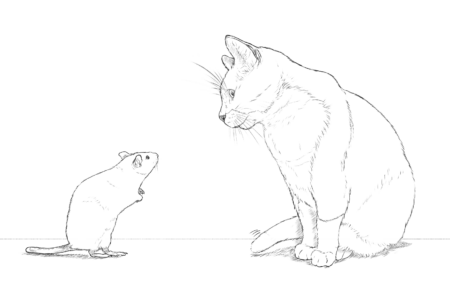
Join us as we delve into the world of parasites! In the spirit of the spooky fall season, we’re excited to share 4 cool illustrated science stories about parasite biology. We don’t blame you if you shudder at the idea of tiny invaders, but we have to admit—as science communicators, we’re captivated by the ‘ick’. In this quick hits post, we’ll explore:
- some unexpected facts about parasite biology
- how these parasites impact us
- some of the curious ways that parasites interact with their hosts
Read on to learn more about the biology of malaria, intestinal worms, Toxoplasmosis, the zombie ant fungus, and picture some of the fascinating facts in illustrations.
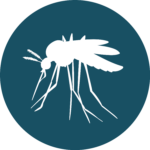 Malaria Parasite Life-Cycle Facts
Malaria Parasite Life-Cycle Facts
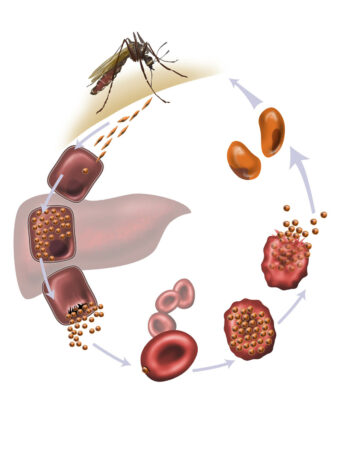
Despite our love for insects, mosquitoes aren’t our favorites. We know, they’re important ecologically as a food source, but the little vampire insects are an itchy nuisance. Beyond being a nuisance, mosquitoes transmit many deadly infections in warmer parts of the world, including West Nile, dengue fever, and malaria. Today, we’re looking at malaria, responsible for the deaths of over 600,000 people in 2021 alone.
The Anopheles mosquito carries malaria and requires a human host to complete its life cycle. In 2021, over 600,000 people died from malaria. Its complex life cycle, with multiple stages, makes it particularly hard to target with vaccines and simple cures. Furthermore, Plasmodium, the organism that causes malaria, is a protozoan. What does that mean? It means it’s a eukaryote, and is thus far more complex than viruses and bacteria that cause many other diseases.
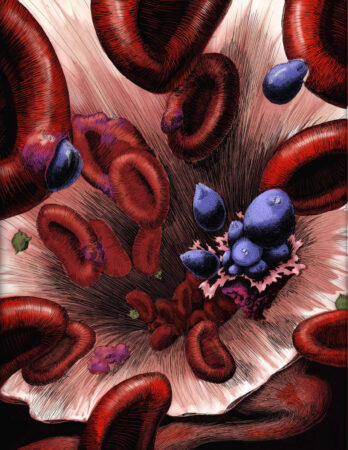
Some interesting malaria biology facts:
Researchers have discovered the gene responsible for mosquitoe’s blood attraction. Check out the gene for blood attraction in this Science article.
The hallmark malaria symptom, a recurring fever every 7-10 days, occurs after malaria parasites have invaded red blood cells, and finally replicated from 1 to 32, bursting forth from the cells. It’s at this point, that severe fevers and chills set in.
Finally, did you know that SayoStudio’s founder Nicolle (Rager) Fuller, studied protozoan parasites in Dr. Buddy Ullman’s lab, before committing to science communication? From a few years ago ;-), here is a paper on the Plasmodium falciparum nucleoside transporter authored by Nicolle.
 Ophiocordyceps unilateralis: Zombie Ant Fungus biology
Ophiocordyceps unilateralis: Zombie Ant Fungus biology
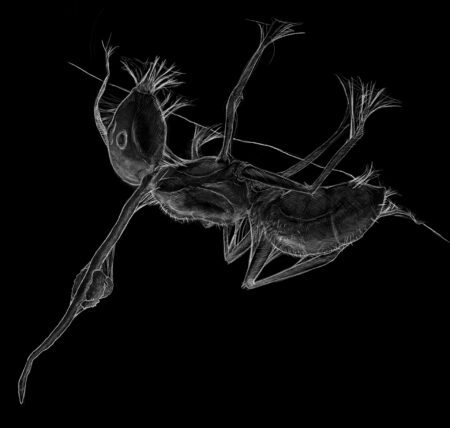
Zombie ant fungus! Mic drop, what more can we say? But no, really, before we go any farther we have to clear something up. This fungus does NOT impact humans. Unless that is, you live in the video game/HBO spinoff, The Last of Us. We couldn’t help throwing this one in, as the premise behind The Last of Us—that climate change has allowed fungal infections to jump to humans—is so captivating. Now that we’ve cleared that it’s impossible, let’s focus on the real-life zombie fungus that infects ants, Ophiocordyceps.
Ophiocordyceps lives out its entire life cycle in the ant, invading the bloodstream and replicating rapidly. Tube-like connections grow to transmit the fungus’s vital information and nutrients as it grows. What makes this parasite-host relationship so fascinating, is the ant’s behavioral changes caused by the fungus. When the fungus nears the end of its life cycle, the ant climbs plants above its anthill. Perched above its home, it clamps onto the underside of a leaf so Opihiocordyceps can rain spores down upon the ant’s own colony.
As said in our blog all about zombie ants, it’s improbable that this fungus, which evolved in concert with ants over millennia, would make the jump to humans, but it’s certainly fun to think about! If you’re interested in more, we go into a little bit more depth in our blog all about zombie ants, or you can check out this excellent article from Yale Medicine.
Ick Factor: 8/10
 Gut-Brain Axis: Parasitic Allies or Enemies?
Gut-Brain Axis: Parasitic Allies or Enemies?
Have you taken your probiotics today? We’ve learned a lot recently about microbiome biology, and that microbes CAN be good for us. We dutifully eat our yogurt, and look for vitamin supplements to support our “gut flora”. However, it might take longer for us to consider purposely ingesting… worms. Even here at SayoStudio, the thought of parasitic worms is not something we relish.
Parasitic worms, like hookworms and roundworms, account for significant childhood malnutrition. In places like the United States, we’re blessed to not routinely have to worry about these parasites, although they do still happen.
And yet, scientists are now studying whether many of our maladies–like severe allergies and auto-immune diseases–can be attributed to our LACK of parasitic infections. Studies have discovered a correlation between the rise in auto-immune disorders in industrial countries and decreased parasitic infections.

For The Scientist magazine, we illustrated how worms interact with our immune system to our benefit.
Microbiologist Alex Loukas contends that controlled, low-level infections with specific worm species, like N. americanus (inhabiting about 42 billion people globally), could bring unique health benefits.
Loukas champions the exploration of worm infections as potential therapies for “Western diseases” such as allergies, autoimmune disorders, and inflammation-related conditions. He’s not alone in this belief. Other researchers suggest that these worms can regulate the host’s immune system.
So our question to you–are you willing to take your medicine, even if it includes a few worms? We just might. We’re looking forward to seeing more of this rapidly evolving research topic.
Ick Factor: 6/10
 Toxoplasmosis gondii biology: Cats and Rats, a Fatal Attraction
Toxoplasmosis gondii biology: Cats and Rats, a Fatal Attraction
Last but not least, let’s dive into the biology of Toxoplasmosis. Toxoplasmosis gondii, or Toxo for short, is a parasitic protozoan that causes Toxoplasmosis. Toxo’s primary host is our beloved feline companion, the house cat. Humans are accidental hosts, but Toxo can’t complete its life-cycle in humans. We become infected from our proximity to cats, either in our homes or when we dig in our gardens and find a gift from the neighbor’s cat. Yet, an estimated 40 million people in the U.S. are infected. It’s not a disease we often think about, but it’s especially dangerous for pregnant people. If infected while pregnant, the fetus can suffer brain damage and blindness.
This is another zombie-like story, where the parasite changes its host’s behavior. Although the cat is Toxo’s primary host, it also spreads via rats and birds. If a rat is infected by Toxo, tissue cysts in the brains of rodents appear to drive rats toward cats. As you can imagine, parasite transmission to a new feline host is much more likely if a rat runs up to it! Makes you wonder, are we influenced by the organisms that infect us?
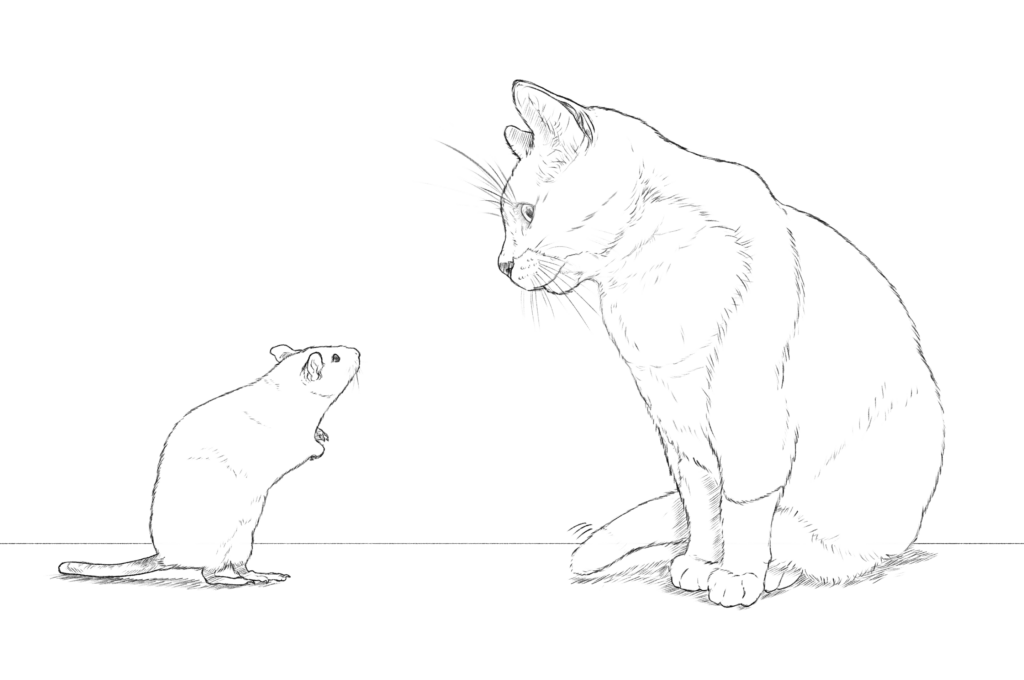
Like humans, many other mammals are inadvertently infected with Toxo.Unfortunately, it can be much more harmful to some animals. Marine biologists along the California coast discovered sea otters with tissue cysts covering their bodies. The animals died quickly of an acute infection, confirmed under the microscope as Toxo. Due to the persistence of this parasite’s eggs, they can wash away into streams and ultimately into the ocean from cat scat (aka poop). With high cat populations in coastal cities, cat poop running into ocean waters has been implicated in Toxoplasmosis in Sea Otters. Some scientists suspect migratory birds are the cause of this latest outbreak, as outdoor or feral cats will catch and eat infected birds thus furthering the spread of this parasite.
Ick Factor: 6/10
Thank you for reading! We’d love to hear your reactions to the chilling world of parasites in the comments, and we invite you to sign up for our newsletter to learn more cool science facts, and see more of our artists’ science illustrations, animations, and designs.
The post Parasite Biology Facts in Pictures appeared first on SayoStudio.




